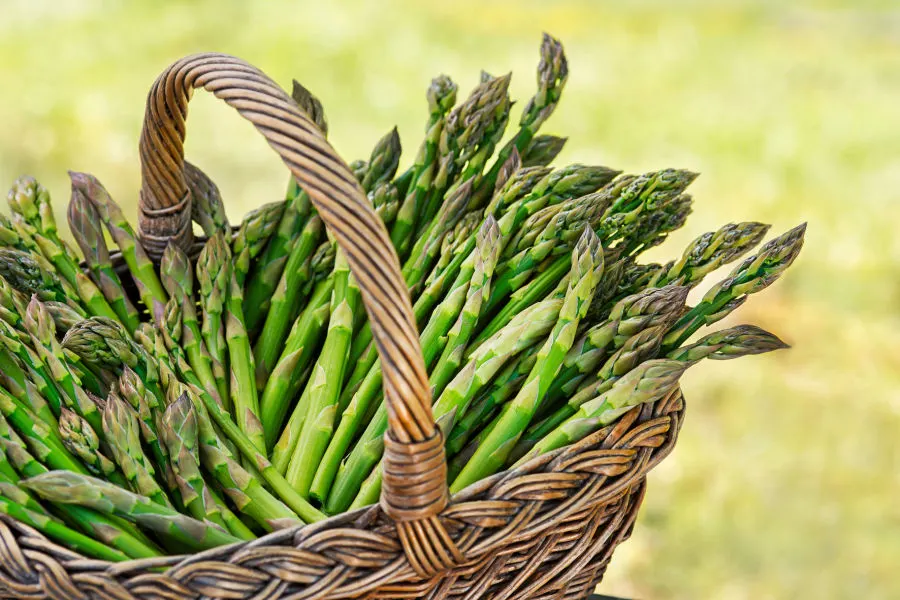Looking for the best way to plant and grow a tasty crop of asparagus in your garden or backyard?
One thing is for sure, asparagus is becoming more popular than ever. Not just in markets and grocery stores but as a vegetable to grow in backyard gardens as well. Asparagus is one vegetable that no matter how fresh it might be at the supermarket, it simply can’t compare to the flavor and crispness of fresh-picked spears straight from the garden.
Beyond its amazing flavor, there are so many great reasons to plant your own crop. For starters, asparagus is easy to grow and maintain. It also doesn’t require a large amount of space. Even better, it’s a perennial crop, and with a single planting, you can enjoy years and years of future harvests.
In fact, a single planting of asparagus crowns can keep on producing for 20 years or more! If all of that wasn’t enough, asparagus is one of the healthiest vegetables you can grow. It’s loaded with nutrients and vitamins, low in calories, and can help to lower blood pressure and improve digestion too.
With all of those amazing benefits in mind, here is an in-depth look at how to plant, grow and maintain your own asparagus crop with ease!
The Best Way To Plant Asparagus – Planting For Success!
Selecting A Good Growing Location
As a perennial crop, asparagus will grow in the same location and soil year after year. Because of that, choosing a prime location is critical when planting for long term success. And when it comes one of the most important location needs of all – selecting an area that receives plenty of daily sunlight is at the top of the list!
Although asparagus tolerates partial shade, it simply will never develop to its full potential unless it can get at least six to eight hours of daily sunlight. With that in mind, always select an area of your garden or landscape that is out in the open for best results.
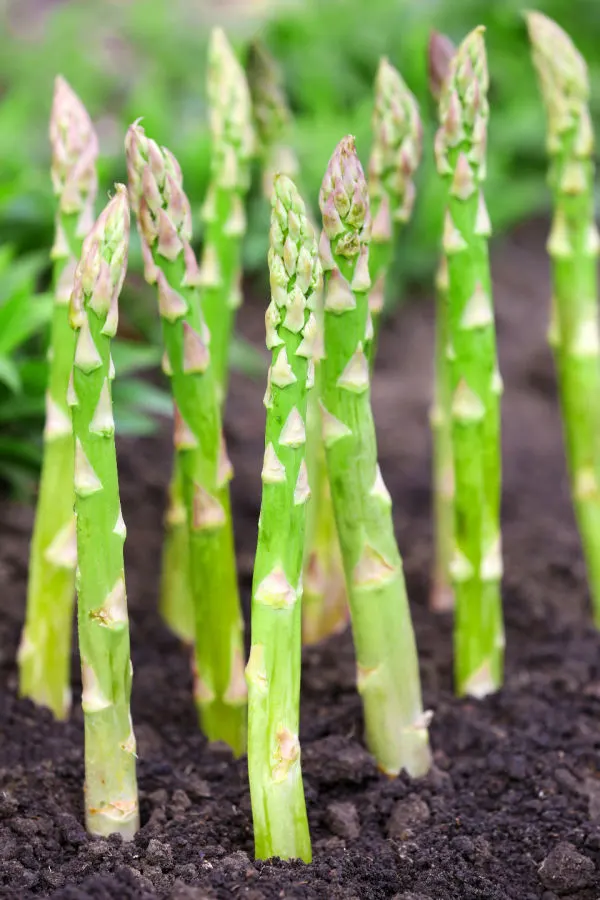
When planting, be sure to take into consideration the future growth of bushes or trees nearby. Although your planting patch may be in full sun now, as trees or shrubs grow, they can bring unwanted shade.
Soil Requirements – The Best Way To Plant Asparagus
Just as important as available sunlight is the condition of the soil where you will be planting. Remember that your crop will be growing in the same space for up to 20 years or more. With that in mind, it is extremely important to fill the soil with nutrients that can help to propel future growth.
Asparagus grows best in fertile, loose, and well-draining soil. Before planting, work in large amounts of compost to help power up the soil. Compost also aids greatly in improving the soil’s structure and humus levels, both important for strong asparagus root and spear growth.
How much compost is enough? Creating a soil mix that is 1/3rd compost to 2/3rds existing soil is ideal. If your soil is extremely heavy or clay-like, you may also want to work in a bit of sand to the mix to loosen it up for better drainage.
The key is to get the soil amended prior to planting. Remember, once your asparagus crowns are planted in the ground, it’s hard to build nutrients or soil structure under the surface. Now that your ground is ready, it’s time for planting!
Listen Below To Our Podcast On How To Grow Asparagus!
Should You Plant Asparagus Crowns or Seeds? The Best Way To Plant Asparagus
You can grow asparagus directly from seed or from crowns. When planting asparagus, crowns are far easier and usually the more successful option. Crowns are also the way to get a much earlier harvest, as seeds can take years to develop into mature plants.
Seed crops, with their small, early growth, are difficult to keep weed-free as they germinate. Asparagus seeds can be hard to germinate and are easily mistaken for weeds when maintaining the beds. Unfortunately, weeding is a must to keep beds productive. The larger early growth of crowns makes that chore far easier!
So what are asparagus crowns? They are actually the roots of 1 to 2 year-old asparagus plants. Crowns produce an edible crop in just the second year after planting. Unfortunately, when growing from seed, it can take up to three years to begin to see any type of sizable harvest.
Selecting Your Plants
In addition to the choice between seeds or crowns, you will also need to decide if you want to plant male or female asparagus plants, or a combination of both. Both varieties will produce tasty spears, however, male varieties are usually preferred over female due to their larger size.
When it comes to growing in the garden, male varieties are usually the preferred choice. Male plants tend to grow larger, and have higher spear production levels. You do not have to plant both for them to produce, so do not worry if you have only male or female crowns.
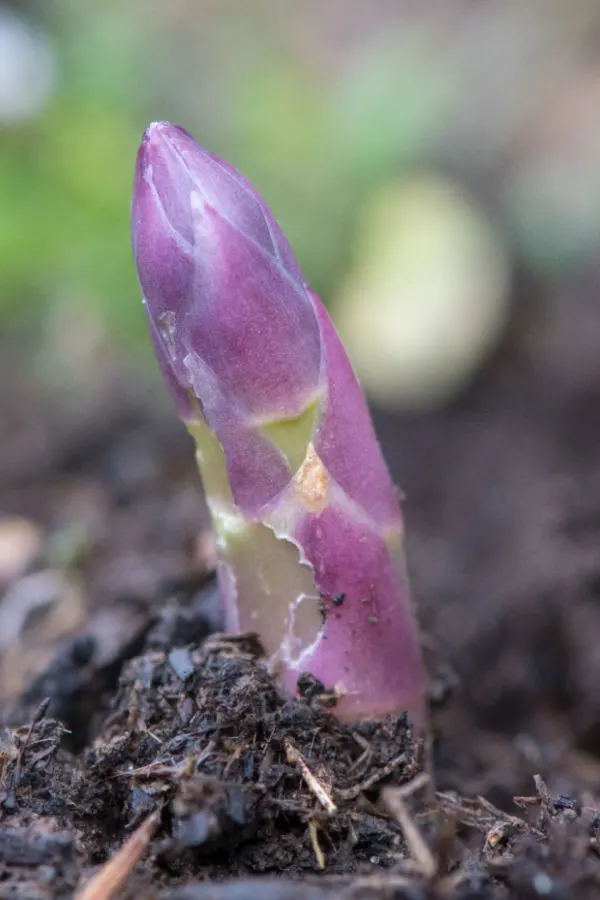
Although there are a lot of varieties to choose from, our favorites to grow are Jersey Giant, Jersey Knight and Purple Passion (crown links below). Not only are they heavy producers, they have outstanding flavor as well. Although the Purple Passion will have some female plants, the purple color is so unique and the spears are delicious.
- Affiliate Plant Link : Jersey Supreme (Male) Asparagus Crowns
- Affiliate Plant Link : Jersey Knight (Male) Asparagus Crowns
- Affiliate Plant Link : Purple Passion (Male Dominant) Asparagus Crowns
Planting Instructions – The Best Way To Plant Asparagus
The trench method is by far the easiest and best way for planting asparagus crowns. Not only is it simple to plant with this method, it creates a great root system for your asparagus plants.
To plant using the method, begin by digging a trench 6 inches deep and 8 inches wide in the soil. Place your crowns at the bottom of the trench, spreading the roots out over the soil. Once in the trench, water the roots well. Next, cover the crowns with about two inches of soil.
Do not fill up the entire trench. All that is needed is just a few inches of soil to cover the crowns at this point. For spacing, allow about 18 inches between each crown and 12 inches between rows.
As the crown begins to grow through the soil, you will continue to cover them with a few more inches of soil, filling in the trench slowly over time. Eventually, the trench will be filled in completely over the course of a few weeks. This trench and fill process allows the asparagus to develop deep, healthy roots in the soil.
First Year Growth & Maintenance – The Best Way To Plant Asparagus
Unfortunately, one of the most difficult things about growing asparagus is waiting for your first harvest! When planting crowns, you should not harvest any spears until the second year of production.
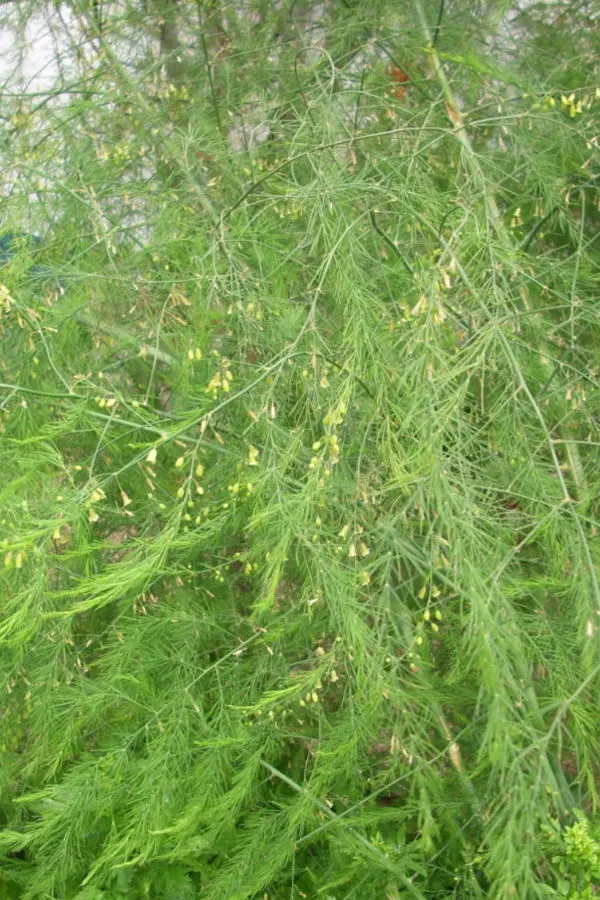
Even though crowns will send up a few delicate spears the first season, it is best to let them grow without cutting and harvesting the first year. Why? By allowing them to grow, it lets the crowns develop underneath the soil to their full potential. That means larger and better production in the years that follow.
Allow your crop to grow at will the first year. Once it has died off in the fall, you can cut it back to the ground. In year two, you can then harvest some spears early. After an early harvest, once again allow the crop to grow to full maturity.
After year two, you can harvest normally, but always allow the plants to grow once harvesting is over until fall. Remember that crowns speed up this process over planting seeds. If you were to plant by seed, you really would not see full production until year four or five.
Mulching – The Best Way To Plant Asparagus
One of the biggest keys to growing asparagus successfully is keeping beds weed free. Weeds and grass compete for valuable nutrients. Unfortunately, beds that fill with weeds will result in smaller, less productive harvests.
The best way to help keep weeds at bay is with a thick layer of mulch. Not only does it help to suppress and eliminate weeds and weed seeds, it also keeps valuable moisture in the soil for plants.
We use either straw or shredded leaves to mulch and keep our beds weed-free throughout the year. A four inch thick layer works well to keep beds under control. As late fall arrives, we add a few more inches to help insulate and protect the crowns through winter.
Fertilizing – How To Plant & Grow Asparagus
Because they are a perennial crop, asparagus plants benefit greatly from added nutrients over time. As with any perennial, the plant can slowly drain available nutrients out of the soil with each passing year. To help re-energize your soil, a bit of fertilizing can go a long way to keep spear production high.
You can fertilize your crop at two times to help production. Once in in late summer / early fall, and again in early spring before the crowns begin to produce spears.
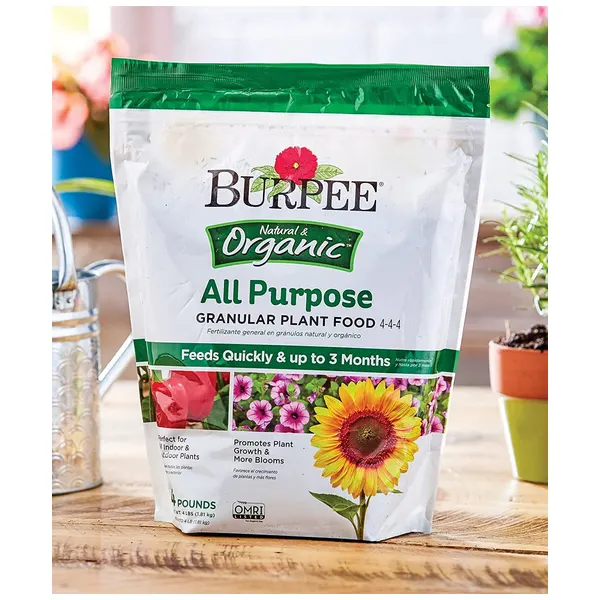
Believe it or not, one of the best and easiest ways to power up your soil is with a top coat of compost. Simply pull back the mulch, and spread a few inches of compost around the base of each plant. This can be done in both early spring and late summer.
You can also use an all purpose organic granular fertilizer to provide power to the soil as well. Again, you will want to apply two times, once in late summer/ early fall and again in early spring before the spears emerge. Affiliate Fertilizer Link: All Purpose Organic Fertilizer
With the compost or fertilizer, the nutrients will work slowly into the soil to help re-energize the soil and crowns. Here is to planting your own incredible crop of asparagus this year, and to years of great harvests in the future! Happy Gardening, Jim and Mary.
Jim and Mary Competti have been writing gardening, DIY and recipe articles and books for over 15 years from their 46 acre Ohio farm. The two are frequent speakers on all things gardening and love to travel in their spare time.
As always, feel free to email us at thefarm@owgarden.com with comments, questions, or to simply say hello! You can sign up for our free email list in the subscribe now box in the middle of this article. Follow us on Facebook here : OWG Facebook. This article may contain affiliate links.

